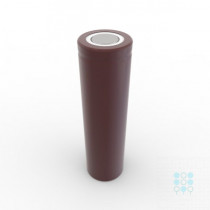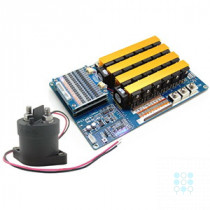When it comes to user interface graphic design, there are a few key principles that can help you create stunning and effective designs. Whether you’re designing a website, mobile app, or software interface, keeping in mind these tips will ensure that your designs are visually appealing, user-friendly, and intuitive. 1. Understand your users: Before you start designing, take the time to understand who your target audience is and what their needs and preferences are. This will help you create a design that is tailored to your users’ specific requirements and expectations. 2. Keep it simple: One of the most important principles of user interface design is simplicity. Avoid cluttering your design with unnecessary elements and aim for a clean and minimalist look. Simple designs are not only visually appealing, but they also make it easier for users to navigate and interact with your interface. 3. Use appropriate colors: Colors play a crucial role in user interface design. Choose colors that are visually pleasing and that convey the right emotions and messages. Use color psychology to your advantage and consider the context and purpose of your design when selecting colors. 4. Pay attention to typography: Typography is another important aspect of user interface graphic design. Use fonts that are easy to read and make sure the typography matches the overall style and tone of your design. Pay attention to font sizes, line spacing, and line lengths to ensure optimal readability. 5. Focus on usability: User interface design should prioritize usability above all else. Ensure that your design is intuitive and easy to navigate. Use clear and recognizable symbols and buttons and consider the placement of elements to enhance user experience. 6. Incorporate visual hierarchy: The design should guide users through the interface in a logical and intuitive manner. Use visual hierarchy techniques such as size, navy blue color meaning, and placement to highlight important elements and create a sense of order and organization. 7. Create consistency: Consistency is key when it comes to user interface design. Use consistent styles, colors, and fonts throughout your design to create a cohesive and professional look. Consistency will not only make your design visually appealing but also make it easier for users to understand and navigate.
Negative space, also known as white space, plays a crucial role in creating a clean and minimalistic user interface design. It refers to the empty or unoccupied areas in a design that are intentionally left blank. By effectively utilizing negative space, designers can highlight important elements, improve readability, and create a sense of balance and harmony in the overall design. One of the key benefits of incorporating negative space in user interface graphic design is that it helps reduce clutter and visual noise. Too much information crammed into a limited space can overwhelm users and make it difficult for them to focus on the main content. By allowing elements to breathe and giving them enough room to stand out, negative space enhances clarity and improves user experience. Negative space can also be used strategically to draw attention to specific elements or actions. By surrounding a call-to-action button or an important piece of information with ample white space, it becomes more prominent and easier to notice. This helps guide users and directs their attention towards the intended actions or messages. In addition to improving aesthetics and visual hierarchy, negative space also adds elegance and sophistication to a user interface design. Minimalistic designs are often associated with a modern and sleek aesthetic. This style has gained popularity in recent years due to its simplicity and timelessness. By allowing negative space to fill the design, a clean and minimalist look can be achieved, giving the design a sense of sophistication. When utilizing negative space, it’s important to strike a balance between too little and too much. Insufficient negative space may make the design feel cramped and overwhelming, while excessive negative space may make it appear empty and lacking in substance. The key is to find the right balance that complements the overall design objectives and enhances the user experience. In conclusion, negative space is a powerful tool in user interface graphic design. It helps create a clean and minimalist design by reducing clutter, improving readability, and guiding users’ attention. By effectively utilizing negative space, designers can achieve a balance between aesthetics and functionality, resulting in stunning user interface designs.
 Visual identity graphic design is the process of creating a consistent and visually appealing set of elements that represents a brand. It involves designing the logo, typography, colors, and other visual elements that will be used across various platforms to create a strong and recognizable brand image. The Importance of Visual Identity A strong visual identity is essential for any brand, as it helps to create a sense of trust and recognition among consumers. It is through visual elements that a brand can communicate its values, personality, and mission to its target audience. A well-designed visual identity can also contribute to brand differentiation, as it sets a brand apart from its competitors. By creating a unique and memorable visual identity, a brand can establish itself as a leader in the industry. Elements of Visual Identity Visual identity typically includes the following elements: Logo: The logo is the central component of a visual identity and acts as the face of the brand. Typography: Consistent typography ensures that all brand materials have a cohesive and recognizable look. Colors: Colors evoke emotions and can help to create a distinct brand personality. Imagery: The use of images and graphics can also contribute to the overall visual identity. Creating a Visual Identity The process of creating a visual identity involves several steps: Research: Understanding the target audience, brand values, and market trends is essential in creating a visual identity that resonates with the intended audience. Concept Development: Brainstorming and experimenting with various ideas and concepts to create a visual identity that aligns with the brand’s values and goals. Design Execution: Bringing the chosen concept to life by designing the logo, typography, colors, and other visual elements. Application: Ensuring consistent application of the visual identity across various channels, such as print materials, websites, and social media platforms. Monitoring and Evolution: Monitoring the performance of the visual identity and making necessary adjustments and updates as needed. Conclusion Visual identity graphic design plays a crucial role in building a strong brand image. By creating a consistent and visually appealing visual identity, brands can establish themselves as leaders in the industry, differentiate themselves from competitors, and build trust and recognition among their target audience.
Visual identity graphic design is the process of creating a consistent and visually appealing set of elements that represents a brand. It involves designing the logo, typography, colors, and other visual elements that will be used across various platforms to create a strong and recognizable brand image. The Importance of Visual Identity A strong visual identity is essential for any brand, as it helps to create a sense of trust and recognition among consumers. It is through visual elements that a brand can communicate its values, personality, and mission to its target audience. A well-designed visual identity can also contribute to brand differentiation, as it sets a brand apart from its competitors. By creating a unique and memorable visual identity, a brand can establish itself as a leader in the industry. Elements of Visual Identity Visual identity typically includes the following elements: Logo: The logo is the central component of a visual identity and acts as the face of the brand. Typography: Consistent typography ensures that all brand materials have a cohesive and recognizable look. Colors: Colors evoke emotions and can help to create a distinct brand personality. Imagery: The use of images and graphics can also contribute to the overall visual identity. Creating a Visual Identity The process of creating a visual identity involves several steps: Research: Understanding the target audience, brand values, and market trends is essential in creating a visual identity that resonates with the intended audience. Concept Development: Brainstorming and experimenting with various ideas and concepts to create a visual identity that aligns with the brand’s values and goals. Design Execution: Bringing the chosen concept to life by designing the logo, typography, colors, and other visual elements. Application: Ensuring consistent application of the visual identity across various channels, such as print materials, websites, and social media platforms. Monitoring and Evolution: Monitoring the performance of the visual identity and making necessary adjustments and updates as needed. Conclusion Visual identity graphic design plays a crucial role in building a strong brand image. By creating a consistent and visually appealing visual identity, brands can establish themselves as leaders in the industry, differentiate themselves from competitors, and build trust and recognition among their target audience.
Please Login or Register to submit your answer


